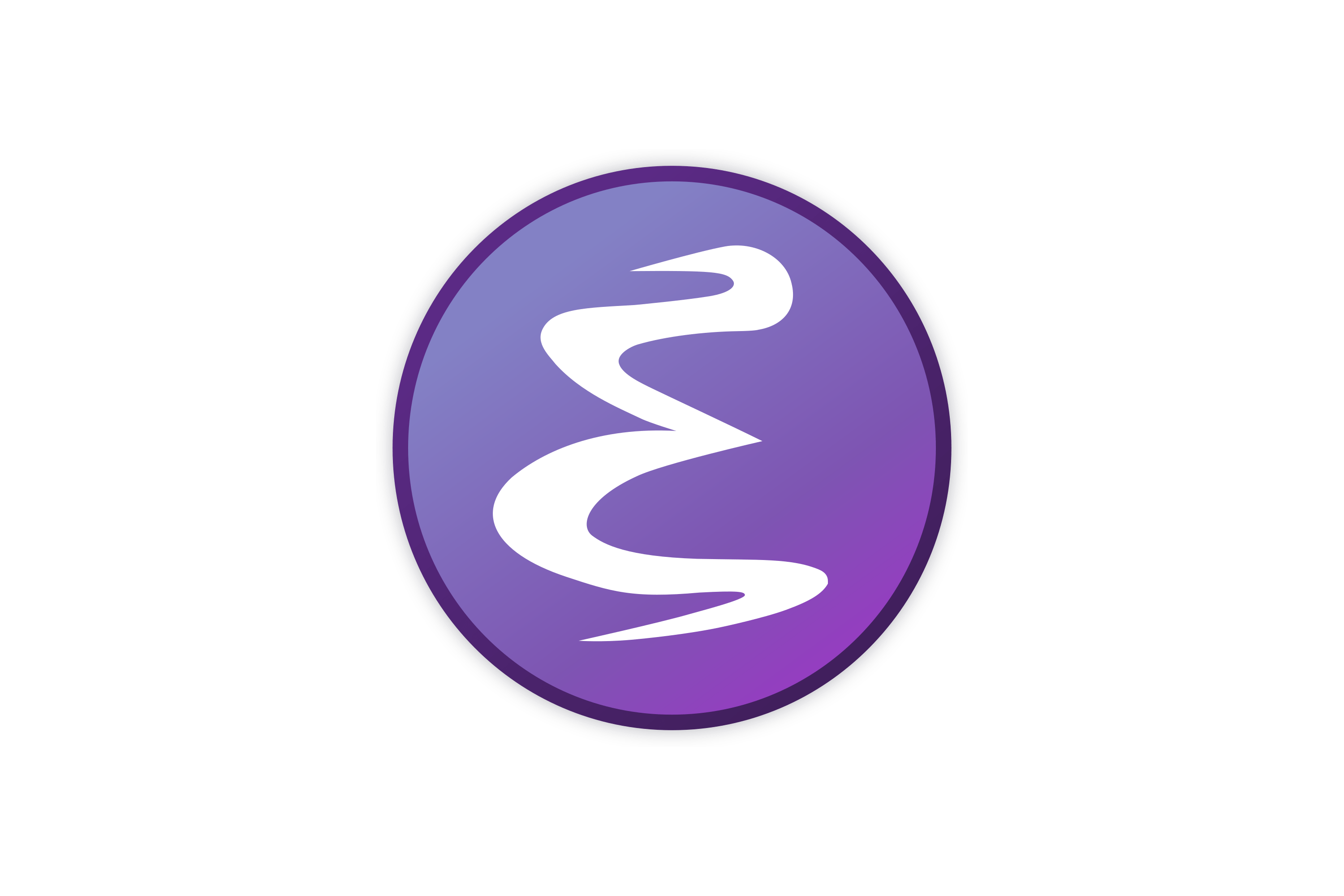Ever had a question about Linux but felt too afraid to ask? Well now’s your chance, ask any question about Linux, no matter how noob or repeated it is, and I and others will help answer them.
Previous noob question thread: https://lemmy.ml/post/14261893
Could you point me to a good place to start learning how to troubleshoot? I added Unbuntu as a dual-boot to my gaming rig a while back, and when it works, it’s great. But as soon as I hit an error, I drop back to Windows because I know how to fix shit there.
First suggestion: commit to using Ubuntu for a set period of time. Could be a week, could be 2 hours. When you encounter issues, force yourself to stay on Ubuntu.
What you’ll find is that at first, errors will seem like gibberish, then you’ll do some snooping online, and find out how to access some log files or poke around your loaded modules. You’ll slowly learn commands and what they do.
Eventually, something will click, ie; “wait a minute, I just checked to see which kernel modules are loaded, and I’m missing one that was mentioned in my error, that must mean I need to load that module at boot.” You load that module, reboot, try your command again, and bam, everything works. You’ve learned how to troubleshoot an issue.
The best way to learn Linux is to immerse yourself in it. You can’t efficiently learn German if, every time you hear a phrase you don’t understand, you switch back to English, right?
The first thing I’ll say is the reason you’re more comfortable with Windows is because you’ve been using it for however long and learning to deal with the issues it has. The same needs to be done on Linux. You’ll have to learn how it works just like you forgot you did for Windows.
Second, along with logs like other users said, you have to know how to use a search engine well. Most issues will be easy to solve, but some may take some searching. The Arch wiki is a good resource even if you aren’t using Arch.
I recently had the realization that I’ve just been putting up with Windows bullshit forever recently when a friend asked me for help with their work PC. They’re a Mac user, but they just started working from home and have been provided a Windows laptop. They sent me a bunch of rushed texts when their headset stopped working. They changed the default audio device after they launched the program. Which never works on a Windows PC. I never have that problem because I have just learned to live with it, I don’t even think about it anymore.
Now I’m really starting to notice all the little things I put up with from Windows on my machine. To be fair my Linux machine is just as janky but at least I can say I made it that way. I keep telling myself to ‘tidy’ my Linux machine up but I never do, it still plays games just fine. Usually. If I didn’t fuck with it.
Ubuntu Wiki Ask Ubuntu Ubuntu Forums
The wiki has some information and should correspond to how Ubuntu specifically is configured. You can ask for ubuntu specific help in those communities. You can also ask here and on several Linux communities on Lemmy.
The Arch Wiki I find to be more in depth than the ubuntu wiki. Of course some things may differ from Ubuntu’s defaults but I found it a useful resource when using Ubuntu.
Finally I suggest you learn a bit about how Linux works in general, what is in what directory, what is wayland and xorg, understand how drives are named etc and some understanding of the terminal (moving around in directories, how to use sudo etc, no need to learn to make bash scripts).
Just come ask here when you have trouble, and we’ll try to help.
When troubleshooting, the biggest thing is searching the web honestly. But some more things to help you out: look for logs. Linux has loads of logs and sometimes can tell you how to fix the problem.
Logs may not be immediately apparent. Some programs have their own log files that you can look into. Sometimes, if you run the program from the terminal, it’ll print out logs there. Otherwise, you read look through journalctl, although this has logs for everything so might be harder to search.
Another useful tip, particularly for system tools and terminal tools, is manual pages. Just run
man lsand replace ls with any command, you’ll get the documentation on how to use that tool.
Is OpenRC meant to be faster than systemD as a process system? I’ve been thinking of spinning up some non systemD distros like Artix on a VM on a mini DELL tinbox.
I will say though, I am not an advanced Linux user as the distros I’ve used were :
Ubuntu Endeavour OS SpiralLinux (Easy Mode Debian)
Would I need to make configurations in openrc or can it just run without messing with it like systemD?
Thank you
I want to upgrade (Mint 21.3 => 22). Last upgrade took hours and the result was so bad I had to reinstall Mint from scratch. Do you guys use the upgrade tool, or do you have good advice on how to approach this?
What is something Linux related that you’ve learned recently?
As a meta question, could this work as an additional (or alternate) recurring discussion question? It felt similar in intent, to encourage people to keep learning / asking questions and chances are that if someone learned something then others will benefit from the information (or correct them)
The other day I learned that you can just grep an unmounted filesystem device. It will read the entire disk sequentially like it’s one huuuuge file. And it will reveal everything on that disk… whether a file inode points to it or not.
Used it to recover data from a file I accidentally clobbered with an errant mv command. It’s not reliable, but when you delete a file, it’s usually not truly gone yet… With a little luck, as long as you know a unique snippet that was in it, you can find it again before the space gets something else written there. Don’t even need special recovery tools to do it, just use dd in a for loop to read the disc in chunks that fit in RAM, and grep -a for your data.
I learned how a kernel actually loads a program and switches between them by using timer interrupts and interrupt vectors that point to specific locations in memory to resume execution from. Not specifically Linux related, but I’m trying to learn more computer science, and it just clicked for me two weeks ago. I’ve been programming microcontrollers for ten years, but those are monolithic programs, and while I knew what interrupts were and have used them, I never understood how an OS actually runs multiple things while staying in control. Now I do.
It’s one of those “aha!” moments like when I realized classes and structs are just data types like any other in C++ when I was starting off programming and can be used like them. OOP became fun after that.
I remember when the mapping of virtual memory segments clicked for me. I think i said out loud, “that’s so clever!”. Now it just seems so fundamental to managing memory for user space applications, but I hadn’t thought about how it was done before.
After 26 years of using Linux, I did my first baremetal “immutable” distro install last week.
My youngest son is starting school and instead of the Chromebooks that they recommend, I took a chance and installed Fedora Silverblue on a $200 Lenovo “student-rugged” class laptop. Everything works and he hasn’t had any issues so far. He gets access to the same student platform as the other students through Chrome, but then I can install Minetest and Tux Paint and GCompris as well.
The older kids run Debian stable for years now, but if this works out, I might transition them over next semester.
I wanna install Linux on my Desktop as main OS after years of windows, last time I tried desktop was Fedora and Ubuntu back in the late 00s, back then all I remember is playing around with Gnome and KDE and compiz…
Most of what I know about Linux distros today is from memes…
How can I quickly learn about the best distro for my needs, (general use, some development, and some gaming, easy hardware support). With a toddler and demanding job, I don’t have too much time to just experiment with different distros and draw my own conclusions.
Thanks in advance.
Ubuntu and Linux Mint are ideal for people who just want to ignore the OS and get work done.
If you are a Dev you should be clear of such problem, unless you need a very specific tool, but, many people can’t switch because the programs they work with are not supported on Linux. Take a look into that, and in the worst case scenario you can dual boot windows.
Gaming wise proton is a bless and let’s you play most games, check protonDB for compability. Major portion of the games that don’t work are due to crappy anticheat solutions.
Good luck, any other questions feel free to ask.
Finally bit the bullet and got a Thinkpad and I’m leaning towards putting Fedora on it. I’ve never used Linux before but I’ve done some research and I like the idea of something that updates more often than Debian but isn’t as DIY as Arch. Do y’all think Fedora would make a good starting point? I hear it’s stable enough and offers enough non-free applications through the RPM file management system.
Also, are there any drawbacks in using the immutable Silverblue version? I’m considering it just so I don’t do anything dumb by accident.
Fedora is what I’ve got on my Thinkpad right now and so far it seems pretty good! Silverblue is very intriguing to me but I chose not to go with it because I need to be able to modify aspects of how the lower system works (using JACK for audio for music production purposes; afaik this is not really supported through Flatpak). Compared to Arch or Nix OS or whatever else that’s popular with the hardcore Linux enthusiasts, Fedora is just right for someone that needs a working system to just get stuff done.
Never be afraid to try different distros you can always wipe and try again. You won’t break your computer. I’m a big fan of immutable distros but I’ve never tried fedora blue. Either will make a rock solid system
Is plasma big screen really an option? Id like to install it on a desktop to act as a android tv. Launch Stremio, YT and maybe one or two other apps/websites. Easy big tile navigation with remote (flirc).
It’s in dev since 2020. The images hosted on the site are bit for any of my hardware. It says theres a Debian package. Installed that though LMDE but it was horrible. Somone mentioned Kububtu can install it with apt, but its not listed. Think I’ll give up.
Good question! Someone let me know when there’s an answer.
How in the world do I set previews while browsing a folder full of photos in KDE plasma (I’m using Nobara because gaming), I can only see the generic photo icon. I love it so far and I’m having very few issues, but trying to sort and delete photos from a folder without a thumbnail/preview is impossible! I have tried googling the issue but apparently it’s not that common? I’m sure these is a dumb setting somewhere but I still haven’t found it.
Install the package kdegraphics-thumbnailers, and then depending on the file manager you may have to enable previews, e.g. in Dolphin > Configure Dolphin > Interface > Previews.
I’m always too afraid to ask… Is this year finally the year of Desktop Linux? Is next year the year of Mobile Linux?
trolololo.jpg
I kid, this year has been the year of Desktop Linux for well over two decades for me. Obviously! And I think this megathread is great idea :)
Year of mobile linux
[ astronauts meme ]
Always has been
-
For Linux enthusiasts, how do you decide which distro you would like to try out next among the plethora of options that are available? The difference I perceive between majority of distros gets smaller the more I try to understand about them.
-
What are the minimum issues I am likely to face using the most beginner friendly distro like Mint for programming and light gaming?
-
How customizable is the GUI in Linux Mint specifically? What if I want a start menu like Windows 10 with the app list and the blocky app tiles? What about those custom widgets I see in hardcore Linux users’ desktops?
-
I heard there is no concept of file extensions in Linux. How am I supposed to work on my projects that I imported from my Windows machine that do contain extensions?
Bonus: Who creates those distro icons in color coded ASCII in the system info command in the terminal?
-
I rarely distro hop. I used Linux Mint for a solid decade. I’ve made the jump to Fedora KDE pretty much entirely because Wayland support is the farthest along here, and that enables me to use more features of my hardware such as two monitors at different refresh rates, Freesync, etc. I did come to the conclusion awhile back that there’s a lot of pointless distros out there, a lot of them are just “I want this particular permutation of default software.”
-
Assuming you’re currently a Windows user, I think the main issue you’re going to face using Linux Mint Cinnamon Edition for “programming” is going to be general culture shocks. Using a package manager instead of heading to the browser, stuff like that. “Light gaming” depending on what you mean by that could be no trouble at all or dealing with some hiccups involving Nvidia’s imperfect support. There are some games that require proprietary anti-cheat that doesn’t support Linux, Valorant is one of those that springs to mind.
-
Difficult question to concisely answer; Mint has a system they call “Spices” which include a series of applets and widgets you can add to the UI, choose them from a menu and then configure them. One of these is “Cinnemenu” which replaces the default Menu with a somewhat more customizable one, though you might struggle to exactly replicate the WIndows look and feel. Beyond that, you might look at Conky for your desktop customizing needs.
-
File extensions do exist in the Linux world but they’re not as important for making things work as it is on Windows. Some files, particularly executable binaries, won’t have extensions at all. A text editor might not automatically append .txt to a plaintext file, because it doesn’t want to assume you’re not writing a bash script or config file or something. But if you record a sound clip with Audacity or something it’ll add a .wav or whatever extension as appropriate.
Bonus: You probably mean Neofetch (or whatever we’re using since the developer of Neofetch has “gone farming”). Those are hard-coded into Neofetch by its developer.
-
For the #4, the file extension can be seen just as a note, a little tag that’ll help you (or anyone else that will receive your file) remember which program you should use to successfully open the file.
From the viewpoint of your computer, in fact, a file is just a sequence of bits and every program can open every file, only it will not be able to find what it expects and actually do something useful with it, just as you can open a book written in any possible language: in most cases you will unable to undestand it, in some others you will be able to read it without any problem.
The “concept” of extensions was than introduced to allow your file manager (Explorer for Windows, Finder for macOS, Dolphin for KDE or Nautilus for GNOME) to know which program to launch when you double click on a certain file through a simple association table (that you can edit in your system preferences).
In regards to Linux you can sometimes read that file extensions are not a thing, but this is just because in the commandline you launch a specific program that you personally point to a certain file, so there is no file manager that needs to guess which app should be launched to open the document you just double clicked on.
That said, I think that should be pretty clear that in a Desktop context (like in a Personal Computer) that double click on a file situation pretty much applies to Linux too, so extensions will be useful and respected by the file manager you’ll find installed in your distro of choice, even if it can use other heuristics when that is missing.
I’m afraid this answer isn’t 100% correct. There are ways to find out a file’s type beyond looking at an extension. For example, there are lots of file formats where all of the files start with a specific sequence of bites, known as a file signature (or as “magic bytes” or “magic numbers”).
You can try the
filecommand line tool to check that you can find out a file’s format without resorting to its extension, and you can read the tool’s manpage to learn how it works.Yes, I know about them and always prove extremely useful every time I receive a file with a wrong/no extension and have little clue about its content. But since the question was about how OP could work with “files with extensions” produced in Windows, I wanted to help clarify what are they, why they are used and that files do not need to be converted or whatever to be opened in Linux as it can “work with them” just fine.
For #1, I’ve made the realization that most distros are lightweight skins or addons on top of another distro. Most of the time, if you start with the base distro, all you have to do is install some apps, change some configurations, and suddenly you have that other distro. It is much easier than doing a reinstallation.
If you filter out all of these distros that only do a little on top of an existing, you’re left with a quite small number actually. I’d bet it’s less than 10 that are not super niche. Fedora, Arch, debian, gentoo, nixos are the big ones. There’s some niche ones, like void Linux and Alpine.
So I’d say if you try all of those, you don’t need to try any more 😁
For #2,
For gaming, if you use steam, you may not face more than the following:
- game does not work with no well known way to resolve. You can find this out by checking protonDB
- game does not work because it needs to enable some options. Very easy to fix, and you can find the options on proton db for each game.
- does not work because you didn’t setup steam right. You often need to enable proton, which in short is steam’s emulator or windows
- does not work because your gpu drivers did not install. This depends on distro and they should all have a guide on how to do it, but usually it is just a matter of installing something.
For programming, you will love your life because everything programming is way easier on Linux.
- I usually stick with distros that have large userbases. I’ve tried smaller and niche distros before, and inevitably they stop being maintained, or move in a direction I don’t like. The larger distros like Ubuntu, Fedora, OpenSuse, have more resources (people, time, money) to spend on testing updates, and have reliable update schedules. When I was younger I didn’t care about that kind of thing, but these days I use my PC almost exclusively for work 10 hours a day, 5 days a week, I need my PC to not break when I update it.
Another technique I use is to go to the vendor site for software I use and look at which Linux distros they officially support. Usually they will publish at least an Ubuntu package, sometimes a universal deb file that works on Ubuntu, Debian or Mint. Sometimes an RPM package for Fedora/CentOS too. This is getting less relevant these days with Appimage files and Flapak images that work the same across all distros.
It’s natural to get bored or frustrated with one distro and want to try out others. Imagine if Microsoft made many different flavours of Windows that each look and operate differently, everyone who is bored and frustrated with default Windows would be trying them all out, comparing them, debating the pros and cons, communities would form around common favourites.
I have a small gaming PC that I use to test out other distros, I’m currently on Nobara, that I actually highly recommend for a gaming-focused distro.
-
This one is really hard to say. It depends on so many factors like what hardware you are running, what software you plan to run, how tech savvy you are, even your definition of what is an issue. Mint is very stable and easy to use, you may run into zero issues getting it installed, running VSCode, playing some Factorio. Or you might run into a small incompatibility between your GPU and the bundled kernel drivers and run into a whole world of hurt spending days tinkering on the command line with no usable graphics driver.
-
I believe Mint still comes with the Cinnamon Desktop, that is specifically designed to be familiar and easy for users transitioning from Windows. It’s not super customisable, but I think it can do what you described. I’m not the best person to answer, I haven’t used Mint or Cinnamon since 2012.
-
File extensions are optional in Linux for some kinds of files. Linux usually tries to identify a file type using a “Magic string”, meaning it will read the first 8 to 16 bytes of the start of a file and will be able to tell with a great deal of accuracy what kind of file it is. Executables, drivers, shell scripts, and many others use this method and do not need a file extension. You can definitely still use extensions though. Eg, libre Office will still save documents with a doc extension (.odt). Often Linux will use a combination of both the magic string and the file extension to determine the file type. Eg, the magic string identifies it as an open office file, and the extension tells you it’s a document kind of office file.
Your Linux photo editor will still save images with a .png or .jpeg extension, because these are the convention (and may be required if you will be opening those files on a different OS). Similarly, your project files created on Windows will still work fine on Linux (if the equivalent Linux app supports that file format).
-
I don’t distrohop. Instead I just use what works for me and what I find comfortable.
-
You will eventually need to use the terminal. And it will be overwhelming at first. But eventually the learning curve flattens a little when you get more comfortable not breaking your system ;þ
-
Can’t comment
-
File extensions are, in essence, nothing but a convention. You don’t even need them in Windows, really (You can open a file with any program, for example, you will just not get anything useful from it). So it’s far from a big deal.
-
-
I don’t know if this is specifically possible. I’m not quite rookie-level new (been using it about a year now) but I have something I would love to have convenience-wise.
It’s a desktop machine with regular speakers, and I have a wireless headset that connects to its own dongle (not Bluetooth). It’s there a way to switch to the headset automatically when I power it on, and revert to speakers when I turn it off?
I feel like it’s possible hardware-wise, but I’m not tryna learn how to code to make it happen, and I don’t know how to find a software solution. I don’t even know what to call what I’m looking for.
i’d suggest starting by finding out what package in your distro actually decides where audio goes - mostly it is pulseaudio (older) or pipewire (newer).
depending on the details of how your distro and the dongle work, it could either be a simple “pactl set-default-sink <headset-name>”, or a more complicated set of udev rules or pipewire/wireplumber scripts.
note that distros using pipewire still often support a lot of pactl commands, so it may be worth looking at the simple option even when not using pulseaudio.
They can also use pavucontrol, whether they use pulse or pipe, for a GUI to select default audio interface as well as easily switch apps to different outputs if needed
I’ve got one progam that I need for work that I cannot get to run on Linux. I’ve tried WINE on both Ubuntu and Zorin (and winlator for android). I have the installer exe file and try to launch with WINE but then nothing happens. Is that a program problem, WINE limitation, or something else? Is there a different program I should try to launch it?
How are you launching the exe with WINE? Try doing it via the command line if you aren’t already. That way you may get some more information about why it isn’t working. Its as simple as
wine path/to/your/exeYou could also try something like Bottles, which will let you use possibly newer versions of WINE without modifying your system’s WINE.
I have a server that has multiple services running under multiple users that each store data. I want to be able to bundle all this data up and send it to another server for backups.
At a high level, how do I manage permissions for this? Currently I run the backup as root, then chown it to a special backups user which can log in through ssh. But this all feels clunky to me.
There are many ways to do this, but the next up from users is using groups!
For each file or data directory, create a group that owns it. This group should have the service’s user as member. Then create a user for running the backups, and add it to all these groups.
The benefit of this is you don’t have to use root, and you have an association of directory to group that you can always change. You can for example grant a user access to a data directory by just adding it to its group.
Might want to take a look at a dedicated backup tool like Borg. It will keep all the proper permissions and file attributes in the backup.
Howdy. I have a “homeserver” that I’d like to actually start using. What’s currently keeping me from it are… Permissions.
I have TrueNas Scale running on top of Proxmox, and I can’t for the life of me not access NFS Shares from other VMs (specifically a Debian VM that I use as Docker Host) that I host in Proxmox. Plox hlp.No question here, just wanted to highlight that I use arch btw
If you’re not using GNU/Hurd are you even trying?
Redox will be finished before Hurd becomes a thing.
i unfortunately using kinoite for my desktop and Debian for my servers. I am not totally in love with kinoite but I don’t dislike it enough to change back to regular fedora.
You should try NixOS, it’s pretty cool.
Don’t listen to this guy, use GNU Guix.
Real talk, I want to try Guix but I have not successfully installed it on any hardware, including VMs. This includes with nonguix for proprietary drivers and stuff. I can never get past install, it always just craps out on some substitution thing. Am I just stupid?
So what happens, does it just not boot? Any error messages?
Real Linux users only use Hannah Montana linux. 😎
That’s old and unmaintained.
You should switch to RebeccaBlackOSMaybe. I’m busy right now.
I might do it later. Maybe I’ll do it on
🎵 FRIDAY FRIDAY GOTTA GET DOWN ON FRIDAY 🎵
I use gentoo btw
I use Slackware btw
* spontaneously combusting * NOOOO
Yes, good
But what init system?
;)
Gentoo is great
OpenRC btw 😁














